The high-tech heart of Dresden beats far outside the baroque city center on a feeder route to the A4 autobahn. On a field in the middle of nowhere is a hulking factory building surrounded by parking lots. The noise of departing airplanes drifts over from the nearby airport. Globalfoundries makes ultra-tiny transistors on semiconductors here. Next to the chip factory, two chimneys rise into the sky from a power plant. Andreas Büttner from Zeppelin Power Systems, the head service technician here, says “We provide electricity and process heat for the chip factory.”
A company called EVC operates the exclusive gas power plant, and the service technicians from Zeppelin Power Systems make sure that the systems work flawlessly day in and day out. “Chip production requires an extremely stable power supply with the highest possible voltage and frequency stability, at a level that the public grids can’t provide. And we can also deliver when there’s a blackout all around us. That’s why this gas power plant is here.”
Two horizontal condensers per engine
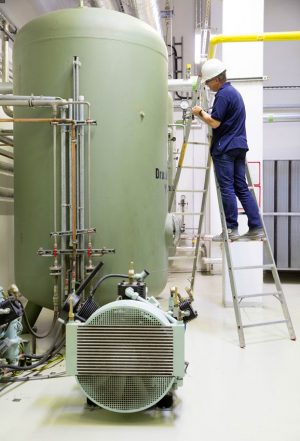
Safety first: Andreas Büttner checks the compressed air tanks regularly. (Photo | Anna Schroll)
The gas engines roar in the cellar-like rooms, with 16 cylinders per engine driving the crankshaft of a generator and delivering output of four megawatts in full-load operation. Red cables lead from the generator into the floor, conducting the produced electricity. The power plant also supplies water in two temperatures — 32 and 80 degrees Celsius — and steam for EVC’s absorbers. The operators use the immense amount of waste heat from the engines and generators, which they carry off through a cooling water circuit. Every minute, 65,000 liters of water rush by the hot engine parts.
The cooling water starts at a temperature of 75 degrees Celsius; afterwards it has reached about 96 degrees Celsius. “After we’ve decoupled the heat for the chip factory with heat exchangers, the water is still at around 90 degrees, much too hot to reuse for cooling the engine. So even more heat needs to be extracted from the water. For that we have two horizontal condensers on the roof for each engine,” says Büttner and heads up the stairs.
“The EC fans need 89 percent less electricity. At first I thought I’d done the math wrong.”
Andreas Büttner Head Service technician with Zeppelin power systems
On the roof, the hot cooling water flows through pipes with tiny aluminum ribs in the horizontal condensers. Above them, axial fans suck up the ambient air from below and blow the heat up into the sky. The air above the fans shimmers with heat. Büttner leans over a fan and says “Two years ago, you would hardly have been able to talk up here. There were 192 old, unregulated fans, always running flat out and eating up huge amounts of electricity. Every month we had to repair ten of them because their electronics couldn’t take the heat. We knew something had to be done.”
Büttner had two horizontal condensers refitted with EC fans with FlowGrid air-inlet guards and AxiTop diffusers as a test. A fan’s EC motor adjusts itself depending on the temperature of the ambient air and the output of the gas engine so that on typical warm days, 25 percent of motor capacity is enough. After a few months, Büttner checked the results. “The EC fans needed 89 percent less electricity. At first I thought I’d done the math wrong, but it was true. Of the savings, 30 percent was due to the more efficient fan motor and 70 percent to the adjustable speed.”
The environment likes it
A year later, Büttner had the other 168 fans replaced. They’ve been humming quietly and problem-free ever since. Büttner is still leaning on an AxiTop as he says, “We’re saving over 1.1 million kilowatt-hours every year, electricity we don’t have to produce in the first place. For the climate and the environment, that means less natural gas, less exhaust and a total of 613 fewer tons of carbon dioxide.” Büttner looks over the roof into the distance. “At Zeppelin Power Systems, we’re serious about protecting the environment. I always say we want to leave something for our children.” Two kilometers away, an airplane takes off. Even with 192 fans at work, it can still be heard.
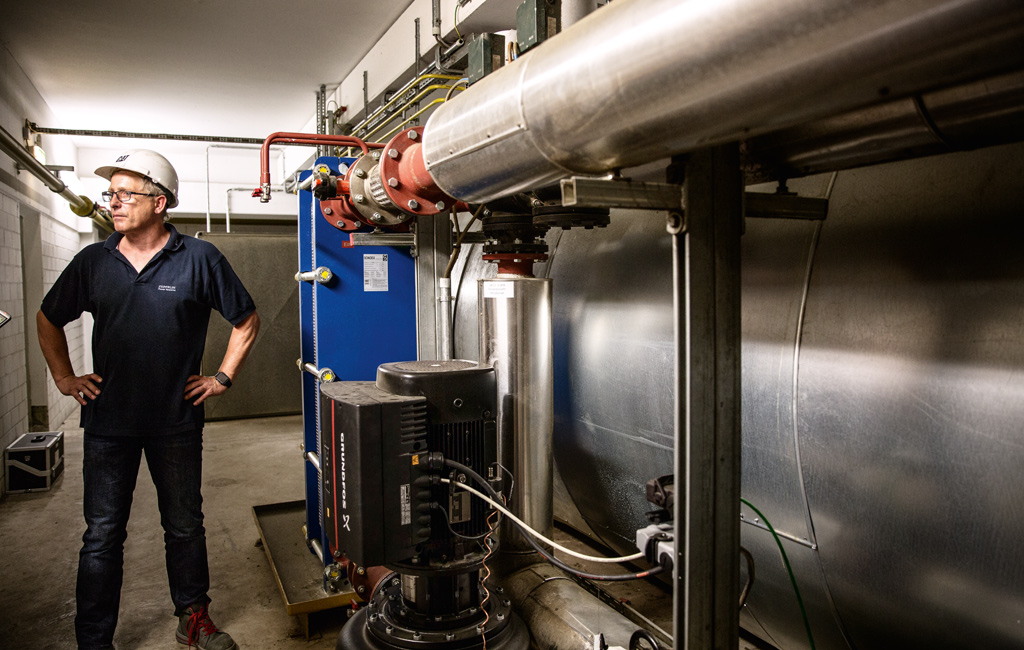
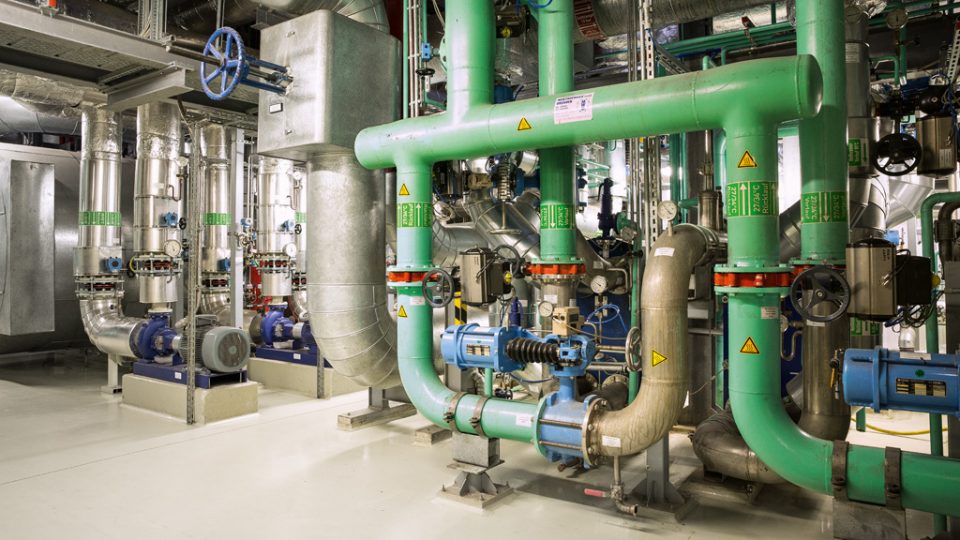
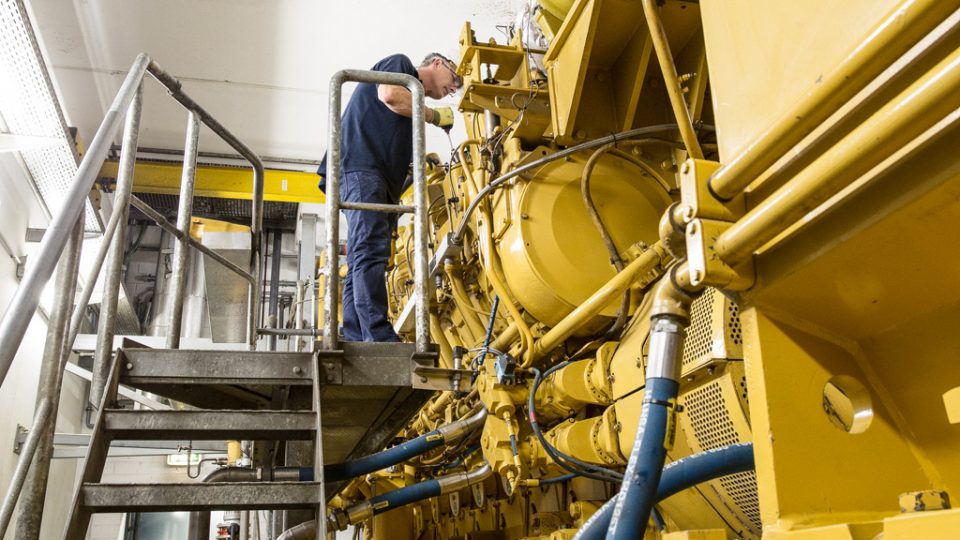
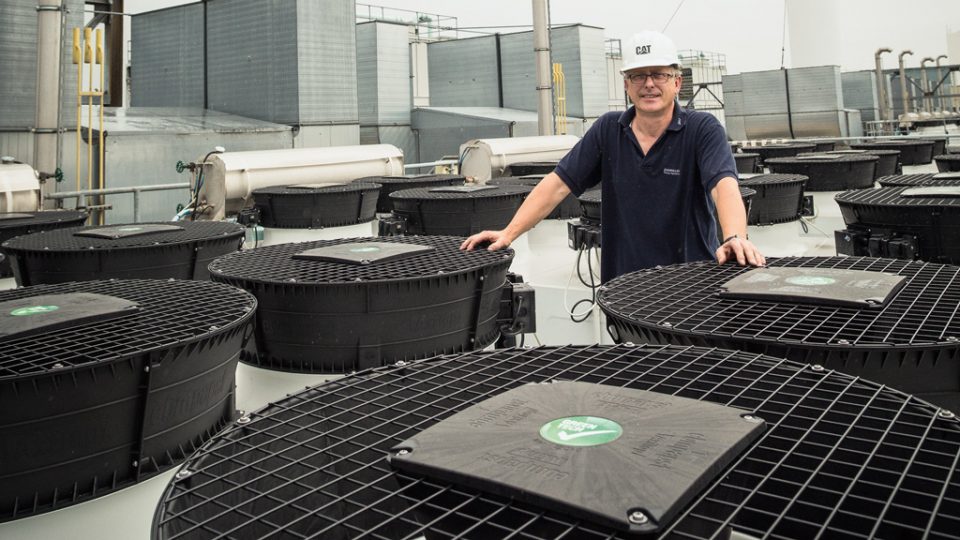


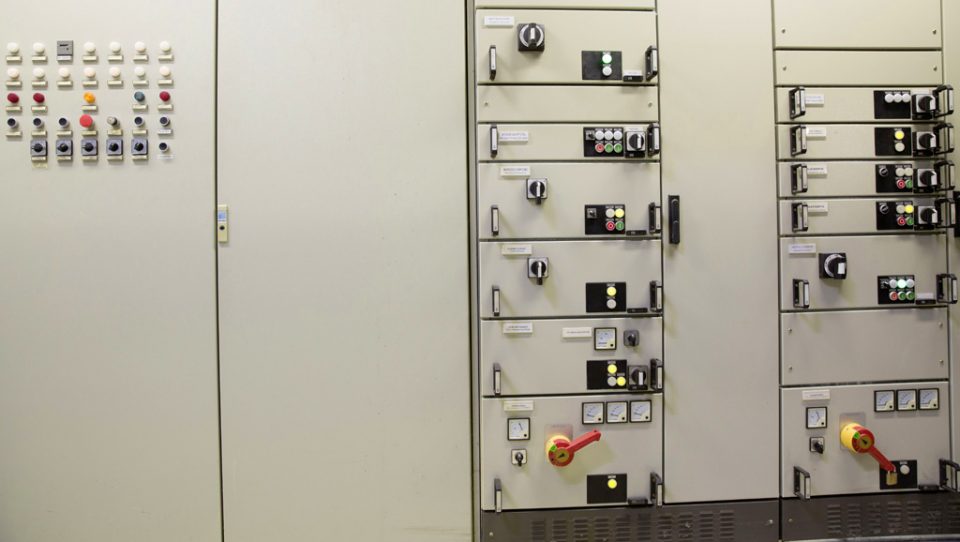
Leave a comment